#françois i de france
Explore tagged Tumblr posts
Text
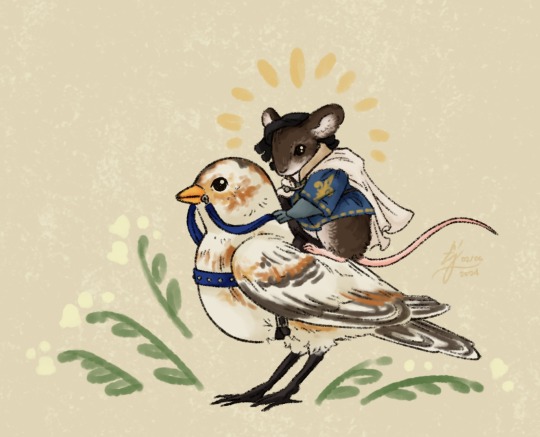
a mouse montjoy for @baronetcoins!
#em draws stuff#h5#henry v 1989#le roy d'armes des françois (dit montjoye)#I fiddled around in the 'birds of france' wikipedia page for a few hours and settled on making his horse a snow bunting#mostly because they're fun to look at and about the right size#adapting saddle and bridle to a bird was a trickier task but mouseifying montjoy was GREAT fun
56 notes
·
View notes
Text
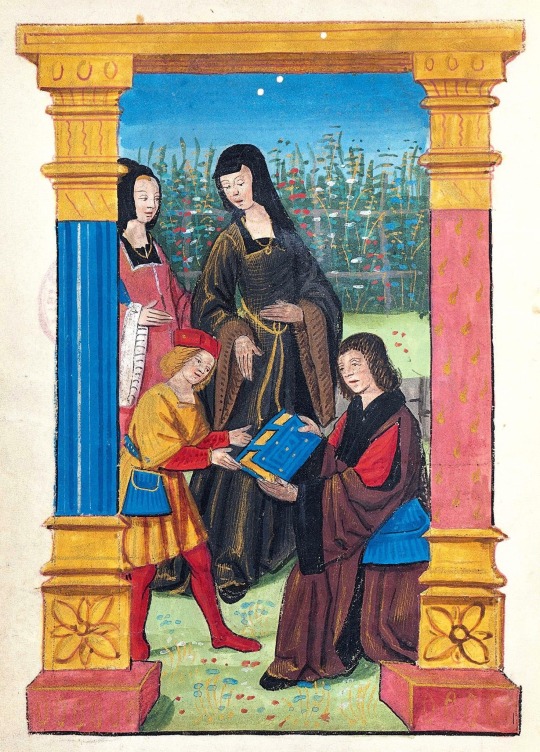
François I received a book in the presence of his mother, Louise de Savoy, and sister, Marguerite d’Angoulême.
Date: 1503.
Source: National Library of France
Description taken from here:*
“Master of Philippe de Gueldre, "Antoine Vérard presents his book to François d'Angouleme, in the presence of Louise de Savoie and Marguerite d'Angoulême, in Octavien de Saint-Gelais, Le Séjour d'honneur, Paris, Antoine Vérart
BnF, Rare Book Reserve, Venom 2239, fol. 1st
In 1506, after his engagement to Claude de France, daughter of Louis XII, François d’Angouleme is summoned to court as heir to the throne. It is no doubt on this occasion that the Parisian bookwire Antoine Vérard is preparing for him a personalized copy of his edition of the Séjour d'Honneur, allegory describing the court of Charles VIII. In the light of dedication, the young prince receives the volume of Vérard's hands, under the gaze of his mother, Louise de Savoie, and a young girl who is undoubtedly his sister, Marguerite.”
*facebook group entitled “enluminures Europe—VIe -XVIe s.”
#16th century France#16th century#XVIe siècle#enluminures#Valois-Angoulême dynasty#Valois dynasty#House of Valois#House of Valois-Angoulême#Maison de Valois#Maison de Valois-Angoulême#Louise de Savoyie#Louise of Savoy#marguerite de navarre#Marguerite d’Angouleme#François Ier#François I#Francis I of France#François de France#primary sources#illuminated manuscript#Louis XII#claude de france
9 notes
·
View notes
Text


Reign/The Borgias
François Arnaud• Toby Finn Regbo | Cesare Borgia • Francis de Valois-Angoulême
#cesare borgia#françois arnaud#francis de valois#toby regbo#the borgias#reign#dauphin#duca valentino#duke of valentinois#pope's son#king henry ii#king of france#francis ii#parallels#eyes#face expression#beautiful#emotions#hair#smalltown boy#bronski beat#i love these guys#i love this song#personal playlist#Spotify
5 notes
·
View notes
Text
If I had a penny for every time a story, that specifically takes place in Paris, made specifically by French Companies, chooses to focus on the love interest of the person whose family, specially their dad, and themselves is more important to the main plot than the love interest, making the love interest the main character, instead of the person themselves, I would have two pennies... Which isn't a lot, but its still weird that it happened twice...
#Assassin's Creed Unity#Miraculous Ladybug#Adrien Agreste#Elise De La Serre#Chat Noir#Papillon#Gabriel Agreste#François De La Serre#Assassin's Creed#No hate to the characters themselves but: Why are Marinette and Arno the main characters of these stories again?#I LOVE BOTH individually' but like the story does NOTHING to give them personal stakes in it... Its a story guys! YOU CAN JUST WRITE IT IN!#Is this a cultural thing of France?#Or was it just sexism of two flavors?#One that believed that Marinette that couldn't be a strong female protagonist™️ if he was there#And the other one just traditional sexism because this was the ''women are too hard to animate'' BS era of Ubisoft
10 notes
·
View notes
Text

#François Ier#royaume de france#maison de valois#roi de france#vive le roi#francis I#king of France#house of valois
6 notes
·
View notes
Text
Young Henri de Guise
Born at Joinville on New Year's Eve, 1549, the life of Henri, third Duke of Guise, was forever scarred by one harrowing event. At the age of twelve he had been forced to watch his father die in agony. The letters he wrote as a 7 year-old to the father, who was away on campaign, reveal a precocious intelligence. Henri idolized his father. When his uncle suggested that he would make a good priest he wrote to his father: "I would rather be next to you breaking a lance or a sword on some brave Spaniard or Burgundian to show that I like much better to fence and joust than to be always shut up in an abbey dressed in a gown." His formal education was, however, brief. At the age of 7 he was sent to Navarre College with the two other Henris, who would one day be his rivals: Henri, the son of Antoine, King of Navarre, and Henri, Duke of Anjou. But it was barely a year before the Prince of Joinville, as he was styled, was summoned by his father to learn the profession of arms. He was soon joined by his younger brother, Charles (born in 1554), while his youngest brother Louis, born in 1555, was destined to inherit his uncle's ecclesiastical empire. Henri was not interested in letters and, in spite of the close attention of his uncle and his grandmother, his knowledge of matters theological was superficial: "I heard the beautiful sermons that my uncle gave at Reims but I promise you," he wrote to his father, "that I will not be about to recite them because they were so long I can only remember half of them." Like his father and grandfather, he was more interested in traditional aristocratic pursuits and his letters resound with the theme of horses, hunting, and war.
In an age when looks and demeanour were thought to herald majesty, the beauty of the House of Guise was renowned. It contrasted with the ugliness that afflicted most of their Habsburg, Valois and Bourbon contemporaries. And the portraits of the new duke support the contention of observers that Henri —as ‘beautiful as an angel’, according to the Venetian ambassador —surpassed even his cousin, Mary Stuart, in looks. He had the trademark pale visage and curly, strawberry blond hair. He was tall too and had a good physique shaped by the usual martial sports and tennis and, more unusually, swimming —he could, it was said, swim across a river in armour. He inherited both his father’s charm and common touch: his immense attractiveness to women and affability with commoners would later be major political assets. If Henri had an Achilles heel it was hubris. In his father, the inbred pride of the aristocrat had been tempered by reserve and modesty, which charmed even his enemies. Henri, in contrast, inherited some of his uncle’s arrogance. A story told by Marguerite de Valois about the young duke is instructive. Asked by her father, Henry II, which prince she preferred, Guise or the Marquis of Beaupréau, son of the Prince of la Roche-sur-Yon, she agreed that Guise was without doubt the better looking but she preferred the other because ‘every day the duke does something bad to someone and always wants to be master’. The story is probably apocryphal but it stood the test of time because it captured something essential.
Stuart Carroll- Martyrs and Murderers: the Guise Family and the Making of Europe
#xvi#stuart carroll#martyrs and murderers: the guise family and the making of europe#henri i de guise#house of guise#françois de guise#henri iii#henri iv#marie stuart#marguerite de france#la reine margot#henri ii
7 notes
·
View notes
Text
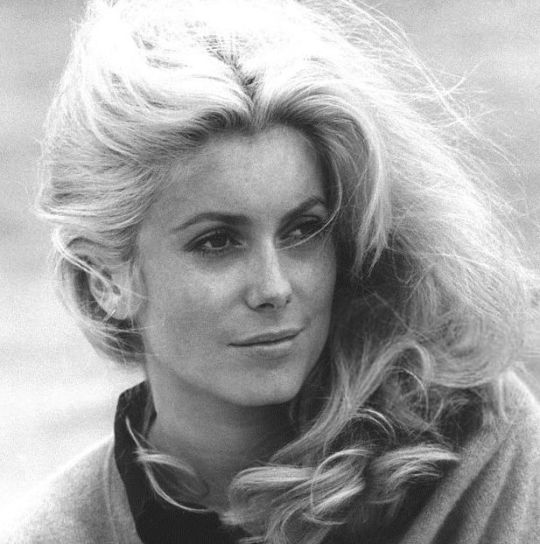

Propaganda
Catherine Deneuve (Belle de Jour, The Umbrellas of Cherbourg, The Young Girls of Rochefort)—Say what you will about the French but they really went off with Catherine Deneuve
Setsuko Hara (Tokyo Story, Late Spring, The Idiot)— "'The only time I saw Susan Sontag cry,' a writer once told me, his voice hushed, 'was at a screening of a Setsuko film.' What Setsuko had wasn’t glamour—she was just too sensible for that—it was glow, one that ebbed away and left you concerned, involved. You got the sense that this glow, like that of dawn, couldn’t be bought. But her smiles were human and held minute-long acts, ones with important intermissions. When she looked away, she absented herself; you felt that she’d dimmed a fire and clapped a lid on something about to spill. Over the last decade, whenever anyone brought up her lips—'Setsuko’s eternal smile,' critics said, that day we learned that she’d died—I thought instead of the thing she made us feel when she let it fall." - Moeko Fujii
This is round 3 of the tournament. All other polls in this bracket can be found here. Please reblog with further support of your beloved hot sexy vintage woman.
[additional propaganda submitted under the cut.]
Catherine Deneuve propaganda:

"One of the greatest european actresses of all time. Famous for portraying 'aloof and mysterious beauties', she could play both the innocent and adorable and the cold and erotic parts. She was so beautiful she was chosen to be the face of Marianne, France's national symbol."

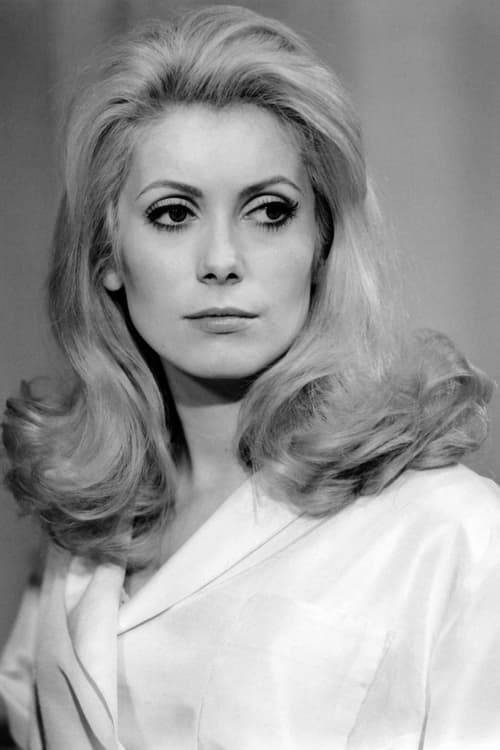
"She was a French movie star famous for icy and aloof roles and worked with some of the greatest international directors in the world (Jacques Demy, Luis Buñuel, and François Truffaut to name a few). She could kill you with her gaze and her bone structure should be studied by painters"
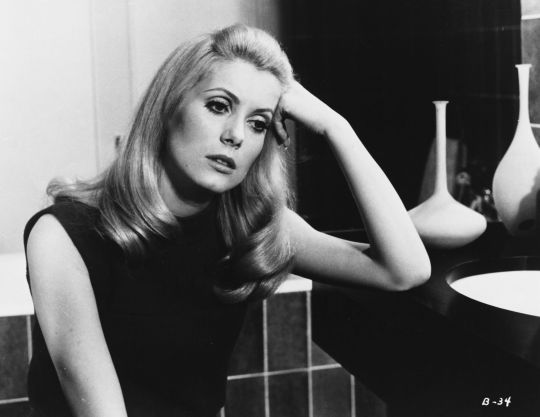
"One of the most famous of French actresses that has grace the film screen. She is just stunning and beautiful."
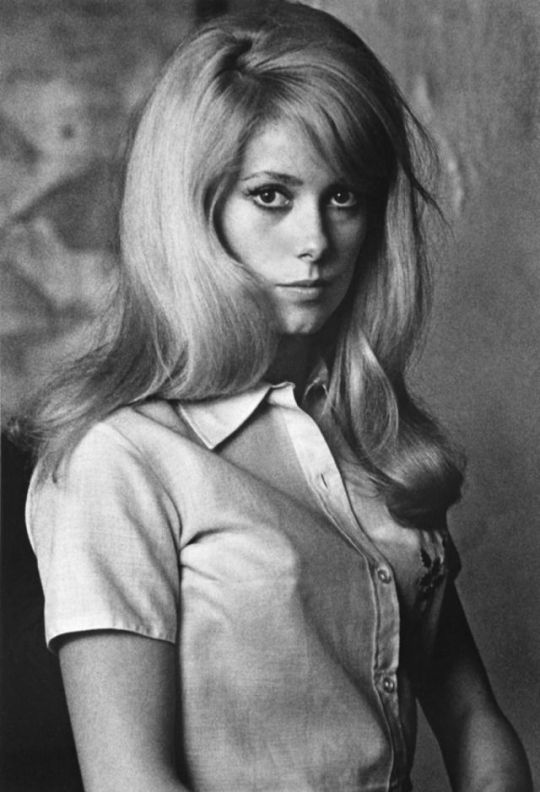
Setsuko Hara:

One of the best Japanese actresses of all time; a symbol of the golden era of Japanese cinema of the 1950s After seeing a Setsuko Hara film, the novelist Shūsaku Endō wrote: "We would sigh or let out a great breath from the depths of our hearts, for what we felt was precisely this: Can it be possible that there is such a woman in this world?"
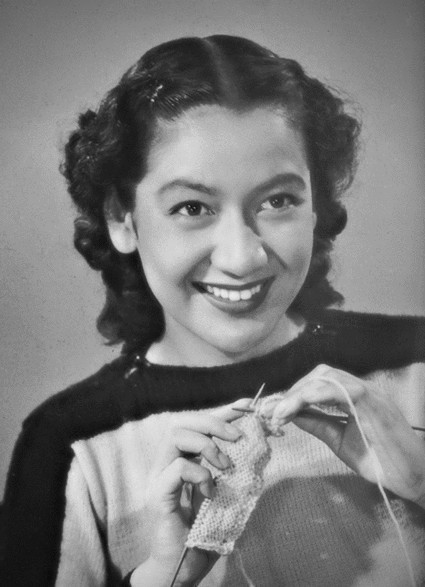

One of the greatest Japanese actresses of all time!! Best known for acting in many of Yasujiro Ozu's films of the 40s and 50s. Also she has a stunning smile and beautiful charm!
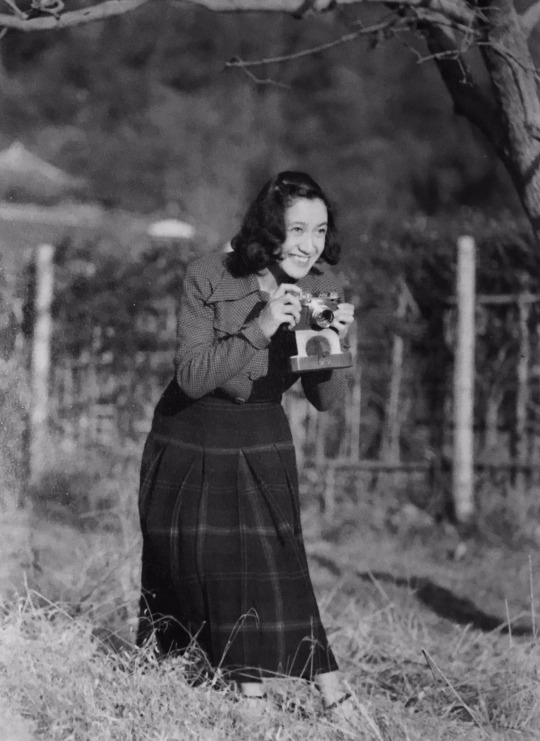
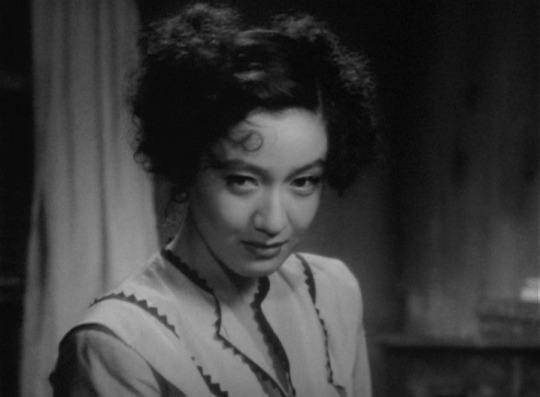
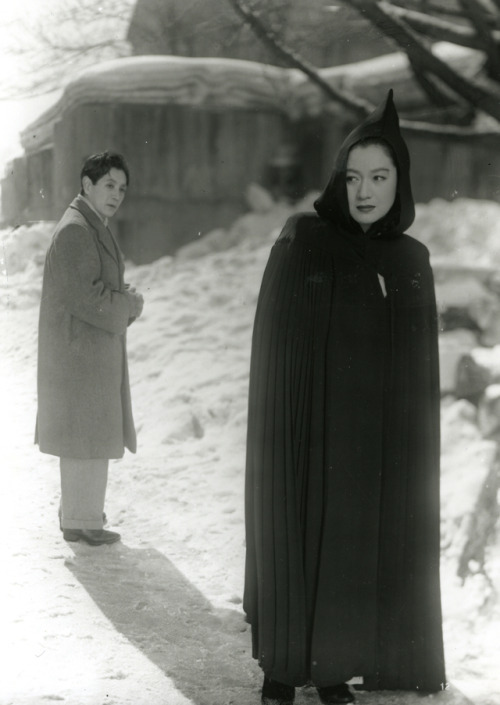
Linked gifset
Linked gifset 2

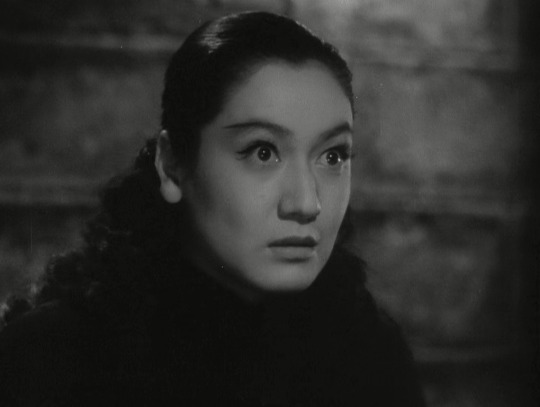

She's considered by some to be the greatest Japanese actress of all time! In Kurosawa's The Idiot she haunts the screen, and TOTALLY steals the show from Mifune every time she appears.

"No other actor has ever mastered the art of the smile to the same extent as Setsuko Hara (1920–2015), a celebrated star and highly regarded idol who was one of the outstanding actors of 40s and 50s Japanese cinema. Her radiant smile floods whole scenes and at times cautiously undermines the expectations made of her in coy, ironic fashion. Yet her smile's impressive range also encompasses its darker shades: Hara's delicate, dignified, melancholy smile with which she responds to disappointments, papers over the emotions churning under the surface, and flanks life's sobering realizations. Her smiles don't just function as a condensed version of her ever-precise, expressive, yet understated acting ability, they also allow the very essence of the films they appear in to shine through for a brief moment, often studies of the everyday, post-war dramas which revolve around the break-up of family structures or the failure of marriages. Her performances tread a fine line between social expectation and personal desire in post-war Japan, as Hara attempts to lay claim to the autonomy of the female characters she plays – frequently with a smile." [link]
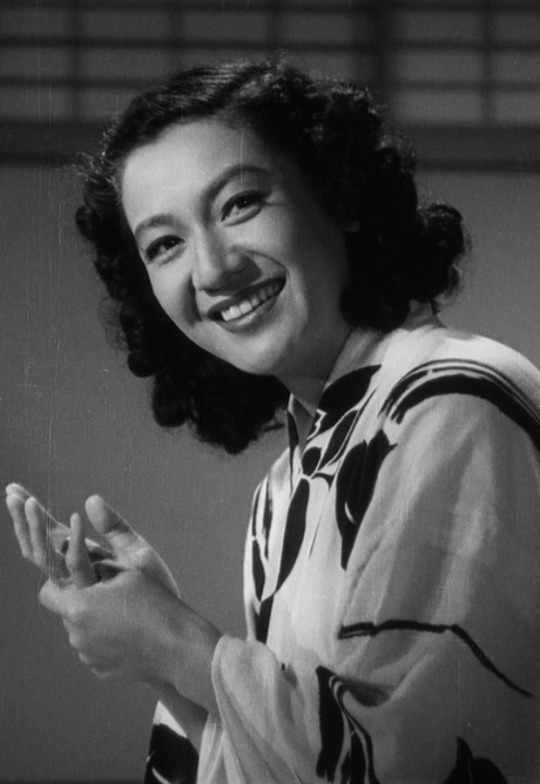
Leading lady of classic Japanese cinema with a million dollar smile
Maybe the most iconic Japanese actress ever? She rose to fame making films with Yasujiro Ozu, becoming one of the most well-known and beloved actresses in Japan, working from the 30s through the 60s in over 100 hundred. She is still considered one of the greatest Japanese actresses ever, and in my opinion, just one of the greatest actresses of all time. And she was HOT! Satoshi Kon's film Millennium Actress was largely based on her life and her career.
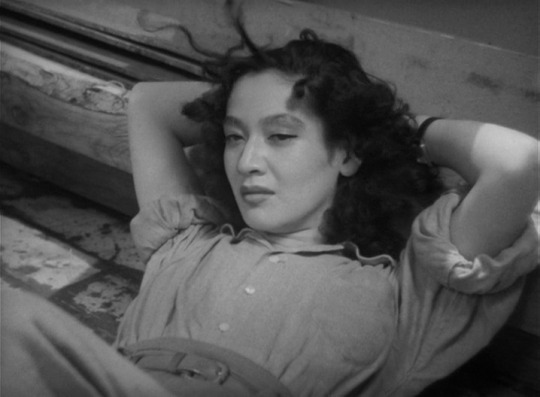
177 notes
·
View notes
Text

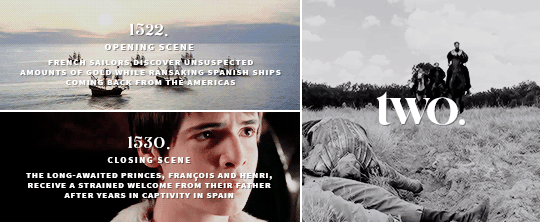

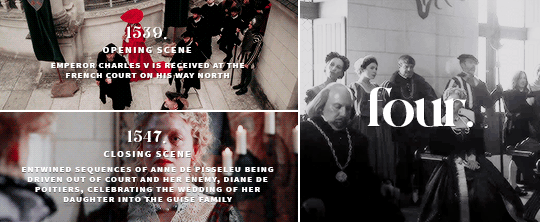
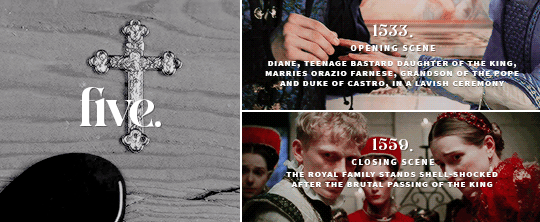
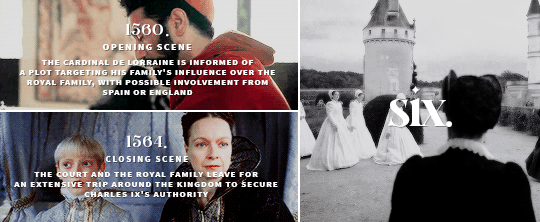

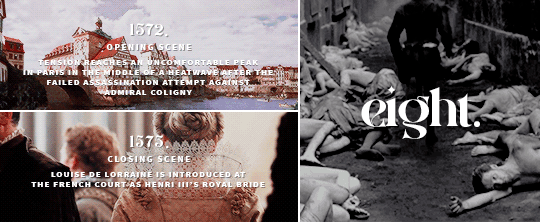



K I N G S I D E, a tale of seven kings
first season 1514-1520. Claude and François finally get married, a vacant seat for Mary Tudor, Louise of Savoy's stubborness to keep her son in check. A new King arises, the New Order, François' quest for glory in Italy. Another crown, another campaign.
second season 1522-1530. The inheritance dispute that leads Bourbon to treason. The pursuit of the italian dream, Claude dies, all is lost in Pavia. Süleyman and the unthinkable alliance, captivity in Spain. The Ottoman fleet. Royal depression. The inheritance dispute that led Bourbon to treason. The ladies' peace, Henry VIII flinching, a price for two princes, a New wife for the King.
third season 1531-1537. Louise dies, tensions between François and Marguerite. The wedding of Catherine and Henri. The rise of Pisseleu, the battle at Court between Charles and Henri and their people. War between Diane and Montmorency. Placards and the anti-heterics frenzy, another war in Italy. Wedding and death of Madeleine.
fourth season 1539-1547. Mending tensions between France and Spain. A very stubborn niece. All eyes on Henri and Catherine's sterile womb. Death of Charles. The duel in Jarnac. The King is dead, long live. Diane de Poitier's absolute triumph over Anne de Pisseleu. The Guises make their move.
fifth season 1553-1559. Diane of France's not so typical royal wedding. Catherine giving birth to the twins, Chenonceau goes to Diane, the cordial hate between the two. Rohan VS Nemours. Montmorency mess and a remarriage for Diane of France. The death of Henri, everything falls down.
sixth season 1560-1564. François II barely hanging on, Catherine's almost giving up, Elisabeth married off, the Guise family's counterpower, Montemorency's political exile, the Amboise conspiracy, preparations for the grand tour.
seventh season 1565-1572. The end of the grand tour, encounter between the royal family and Elisabeth, queen of Spain. The rise of Charles IX, a new queen, Marie Touchet and her bastard boys. Catherine's plans to get a match for Marguerite. Rising tensions between Charles and Henri after Jarnac and Montcontour. Marguerite's nuptials amidst tensions and Coligny's attempted murder.
eighth season 1572-1575. Coligny and the Protestant leaders rallying the troops. The Saint Barthelemew Massacre and the promise of Marguerite to never forgive her family. Catherine finds out Anjou's possible involvement. A new king for Poland. Marguerite's toubled married life. Death of Charles IX. Henri's escape from Poland and slow return to France.
nineth season 1581-1584. Catherine's illusions shatter. New King, no heir. Marguerite returns to Paris. Louise shows some spine against the King's favorites. Quarelling with Anjou, tensions with Elizabethan England, Anjou's election and subsequent death and Catherine's anger. The Guise family veering off the road.
tenth season 1585-1589. The mounting war of the three Henris. All eyes on King Henri who has no sons, Catherine's political exile, the slow burning of the last Valois children. Hunting down Marguerite from stronghold to stronghold, ending with her house arrest in Usson. Assassination of the Guise brothers, the death of Catherine, Henri III breaks down in Diane's arms. Marguerite in exile, Diane the only "true" daughter of Catherine's, as she sets out to (successfully) pacify the kingdom on her own.
#historyedit#perioddramaedit#mine#*#*kingside#16th century#so yeah this took me a whole month instead of a good week#we love crappy laptops
197 notes
·
View notes
Text

I went to Puy du Fou (1) and watched 'Le Dernier Panache' (2), and needless to say, I've got a few things on my mind. But before I gather my thoughts into something coherent, there’s one pressing issue I need to address: there was NO “extermination” policy in the Vendée.
Is it clear enough for everyone? I sincerely hope so because yesterday, I was among an audience of about 5000 who were shown a scene depicting Robespierre (in yellow), Saint-Just (in turquoise), and Barère (in purple) arguing for the complete destruction of the Vendée… for reasons…
In plain terms, were they advocating for genocide (3) in the Vendée.
This didn’t happen. In 1793, the idea of a distinct Vendéen identity wasn’t a real thing. The Vendéens were not recognized as a specific regional or ethnic group, not by themselves or anyone else.
Do you know what was real? Brigands rebelling against the first French Republic. What were the policies of extermination targeted towards? Those Brigands. What do you call that? Civil War.
On 1st August 1793, Barère delivered an inflamatory speech (4) that many use to argue the Committee of Public Safety's alleged genocidal intent. His words were indeed unhinged, typical of the era’s rhetoric.
Barère did say, "No more Vendée, no more royalty; no more Vendée, no more aristocracy; no more Vendée, and the enemies of the republic have disappeared," but this infamous line follows a crucial preamble: "We will have peace the day the interior is peaceful, that the rebels are subdued, that the brigands are exterminated. (5)" It’s disingenuous to interpret this as a call to wipe out an entire region (6).
Moreover, this speech was followed by the "Décret relatif aux mesures à prendre contre les rebelles de Vendée", which includes an article (the 8th) stating: "Women, children, and the elderly will be taken inland. Provisions will be made for their subsistence and safety, with all the consideration due to humanity" This directive was actually enforced as evidenced by the 20,000 to 40,000 refugees who the government supported in cities like Poitiers, Orléans, and La Rochelle.
The conservative right in France has been peddling this genocide narrative since the mid-1980s, but no amount of dramatic cursive text with melancholic violin strains will convert fiction into fact.
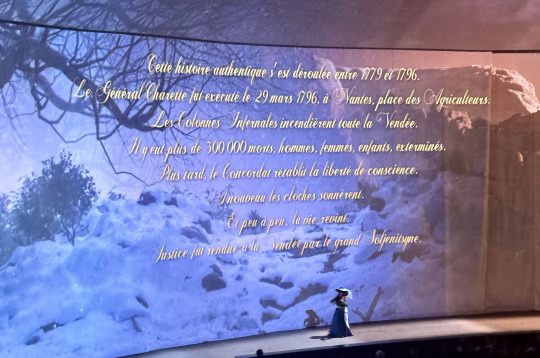
What happened in the Vendée was horrific. Were there war crimes? Numerous. Was the region scarred by the violence? Undoubtedly. Should we acknowledge that? Of course! But pushing a theory that is not true detracts from recognising the violence, learning from it and ensuring it will never happen again.
It also cheapens the heroic acts and sacrifices of those who fought not for the narrow political agendas of the 21st century but for causes they truly believed in. The counter-revolutionaries in the Vendée and throughout France were driven by a deep commitment to protect their communities, faith, and way of life. They were not merely victims of a systematic extermination effort but active participants in a struggle to defend their political and religious beliefs (7). Admittedly, I'm not an expert on Charette, but I suspect he would be disturbed to see his legacy so grossly misrepresented…
Notes
(1) Puy du Fou is a historical theme park in the Vendée known for its elaborate live shows that recreate historical events. It has faced criticism for potentially exploiting history and is managed by the Puy du Fou Foundation, linked to its founder, Philippe de Villiers, a French politician noted for his conservative and nationalist views.
(2) This particular show focuses on François Athanase Charette de La Contrie, a Vendean general.
(3) Genocide is defined by the United Nations in the "Convention on the Prevention and Punishment of the Crime of Genocide", adopted on December 9, 1948, as acts committed with the intent to destroy, in whole or in part, a national, ethnical, racial, or religious group.
(4) The conflict in the Vendée began in March 1793, prior to Robespierre's association with the Committee of Public Safety. Danton was the one who was instrumental in shaping the initial response to the uprising and was the president of the Convention during Barère’s speech. Weirdly enough, Danton is nowhere on that stage…
(5) The full qoute is "Nous aurons la paix le jour que l'intérieur sera paisible, que les rebelles seront soumis, que les brigands seront exterminés. Les conquêtes et les perfidies des puissances étrangères seront nulles le jour que le département de la Vendée aura perdu son infâme dénomination et sa population parricide et coupable. Plus de Vendée, plus de royauté ; plus de Vendée, plus d'aristocratie ; plus de Vendée, et les ennemis de la république ont disparu. "
(6) This type of rhetoric was not unique to the Vendée but was also directed at other counter-revolutionary hotspots across France like Brittany, Lyon, Marseille, Avignon, etc.
(7) I'm not a particular fan of those beliefs but I can respect the courage to stand up in defence of a lost cause.
#frev#french revolution#robespierre#saint just#bertrand barere#charette#vendée war#vendee#royalist history#puy du fou#distorting history is not ok#even if it makes things more “fun”
72 notes
·
View notes
Text
Night at the Museum: Redesigning Characters (Bonus)
Character profile: Napoléon "Le Petit Caporal" Bonaparte
This character is based off of and takes inspiration from the historical Napoleon Bonaparte.
Real Name: Napoléon Bonaparte
Nickname and Meaning: Le Petit Caporal - A term of affection from his soldiers
Age: 40-41 (Late 1809, early 1810)
Time Period: Napoléonic era frace
Family: Josephine de Beauharnais (ex-wife), Marie Louise (wife)+ seven siblings none of which were brought back besides Louis-Napoléon Bonaparte- his nephew

(Headcanons under the cut)
Based on/taken from History:
Pompous
Very overly confident.
Egotistical. He hasn’t seen his own downfall yet and feels he can win more.
On December 2, 1805, in his greatest victory, he defeated the combined Austrian and Russian armies in the Battle of Austerlitz.
signed treaties that created the Grand Duchy of Warsaw
Late 1809, early 1810, Napoléon’s roughly around 40-41
Still loves Josephine, but planning to divorce.
Upset she wasn’t remade alongside him
From Napoléon's memory, Joseph Bonaparte is king of Spain, but isn’t doing well.
Stupidly cute smile
+ Sensitive + Honest + Intelligent - Nepotist - Aggressive - Forgets other people have feelings
My own silly headcanons:
Has put on weight, he’s not used to fighting with it.
Napoléon likes to steal pop-it’s and water wigglers from the gift shop. He always has to have something in his hands to fidget with- normally it’s his gloves or a snuff box or taking apart and cleaning his pistol. Now that he has access to modern fidgets, he likes to taking the green ones.
He also really likes clicking mechanical pencils
He loves inventions that make life better in little ways. Canning food was invented in his life (he’s actually the one who offered a prize of 12,000 francs to improve the food preservation methods that existed at the time which led to canned food being invented) but there was no simple way to open the cans. He loves can openers- taking them with the promise of returning them to just take apart and put back together.
If your gossiping, he obviously eavesdrops. Napoléon cans and will butt into your conversation about someone and listen like you’re saying the most interesting thing in the world. If he can’t come over to you, he will do the lead paint stare at you.
Still acts like he’s emperor.
Originally thought the average height of humans gained a lot of height. He was envious up until he learned whoever created his mold got his height wrong and he’s 5’2”, not 5’7”, then, Napoléon was just pisssed off.
He loves to infodump about his victories and will call over his men to help act them out, sneaking small fibs in to make himself look even better than he already does. If you ask him about his losses, you’ll only get a stare in return and a quick “Non”. (Credit @frombottlealleytotheharbor)
“Hey, do you remember [insert battle he lost]? What was it like?” “…Non.” “But… weren’t you there?” He starts walking away. “Non.” “But—“ “NON!”
He gets into fights with Al because Al is someone who clearly doesn’t respect him. The Capone trio love to tease him - especially Frank and Al. Ralph watches with a grin, which is somehow even more infuriating to Napoléon.
Sometimes getting out of his box, he looks like a well-loved stuffed animal. It takes him a moment to get himself together.
Loves watching true crime and reality TV shows. Isn’t the biggest fan of Horror movies.
Somehow got his hands on a cigarette, absolutely died after one puff. Napoléon threw it onto the ground and stomped off coughing, vowing to never do it again.
He’s so very envious that Al and Ralph had even a bit of time with their sons while they were alive. François Charles was born after the time he was made, and it makes Napoléon feel so homesick and want his kid- one that he doesn’t even know. He absolutely adores Louis Napoleon, who he only met a few times.
Loves ABBA, originally he disliked, but he's grown to like it now that he knows the meaning
I gave him his Laurel wreath just because I thought they were cool and also to show that he's still very pompous and full of himself.
Unfortunately no doodles, I haven't had time!
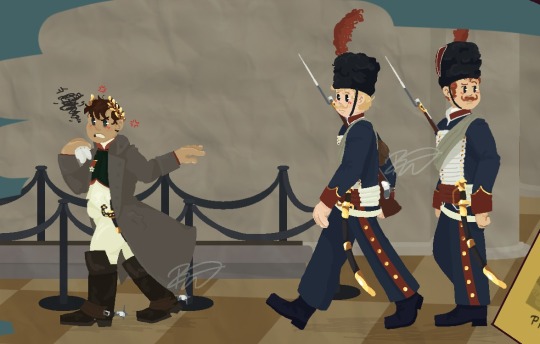
Étienne Champenois belongs to @lidensword and Gustave Bréant belongs to @all-yn-oween
Frank, Al, Ralph
#NATM#natm au#night at the museum ocs#night at the museum#Night at the museum 2#Night at the museum battle of the Smithsonian#NATM 2#napoleon bonaparte natm#napoleon natm#Bonaparte natm#Napoleon fanart#Frosty's art#Apr. 3#2024#Apr. 2024#I'm in the airport leaving Chicago now#well... Im stuck in the airport#I've been here for 2 hours and I have to wait around another four#I've been delayed three times#I'm also working on Al now I wasn't able to finish him by today so heres Napoleon#I was originally saving him for last#Also Im really sorry if I got anything wrong#Napoleon isnt my main guy so I know less about him
92 notes
·
View notes
Note
Did Prieur Claude Antoine really have a daughter with Madame Vêtu in 1788 (or is it just a strong possibility)?
Whether Prieur had a daughter with Catherine-Elisabeth Vétu, born Joly, is something we can never know for sure, unless we go back in time and ask them. However, according to both Paul Arbelet and Georges Bouchard, who had the chance of having access to Prieur's complete collection of personal papers, there's strong evidence that the latter might have truly been the biological father of Madame Vétu's last child.
Before delving into the matter, allow me a little digression on how Prieur and Catherine came to know each other.
The two met in 1785, when he was 22 and she was 29; yes, she was seven years older than him! The former moved to Dijon both for military duty and to assist Louis-Bernard Guyton in his scientific works. The young officer needed a place to stay and one of the rooms of the Vétu family house revealed itself to be the most suitable for him. Bouchard guessed that the two might have become close very soon, allowing Prieur to eat and sleep there for free since his low salary at the time wouldn't have allowed him to always pay the rent. (1)
Not a far-fetched speculation, considering Catherine’s lively character and active participation in the management of her husband's grocery store; at that time managing a business implied a minimum of education and both a strong dedication and commitment to work; qualities that Prieur appreciated and admired in a person. On the other hand, Catherine, despite the age gap, must have been impressed by Prieur's reserved, hardworking character and polite manners, something that her husband seemed to be lacking. (2)
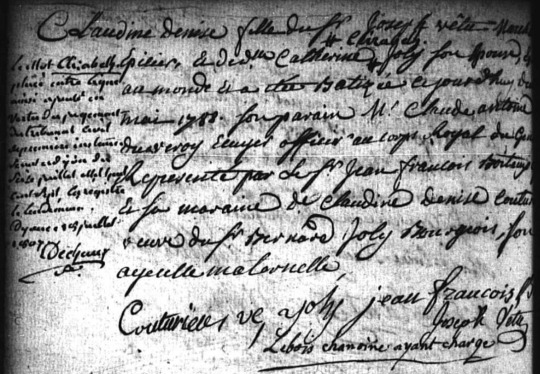
In 1785 Catherine already had two children, Pierre, 9 years old and Bernard, 7 years old; three years later, her last one, Claudine was born. Prieur was chosen as godfather, or offered to be.
Here's the child's baptism certificate I managed to find in the Cote-d'Or archives:
[Source: Archives de la Côte-d'Or, Registres paroissiaux et état civil, XVIe siècle-1938 (sous-série 2 E). Collection communale 1579-1792, Toutes paroisses, FRAD021EC 239/095, Vues 0252-0317 : Paroisse Saint-Jean, Baptêmes et Mariages, janvier 1788-décembre 1788, vue 279]
Claudine-Denise, fille du Sr Joseph Vétu, marchand épicier et demoiselle Catherine Joly son épouse, est venue au monde et a été baptisée ce jourd'hui 2 mai 1788, son parrain, M. Claude-Antoine Prieur Duvernoy, écuyer, officier au corps royal du génie, représenté par le Sr Jean-François Boiteux, épicier, et sa marraine, dame Claudine-Denise Couturier, veuve du sieur Bernard Joly, son aïeule maternelle. (3)
EN: Claudine-Denise, daughter of Joseph Vétu, grocery merchant and of Catherine Joly, his spouse, was born and baptized on this day 2 May 1788, her godfather being M. Claude-Antoine Prieur Duvernoy, esquire, officier in the Corps Royal du Génie, represented by Sr. Jean-François Boiteux, grocer, and her godmother dame Claudine-Denise Couturier, widow of Monsieur Bernard Joly, her maternal grandmother.
As mentioned before, the supposition that Claude-Antoine might have been more than a simple godfather stems from some facts that for Arbelet and Bouchard are pretty emblematic: In Prieur's personal notes, there's a date written down by him and another one right next to it, which not only corresponds to Claudine's birthday, but it's curiously nine months distant from the first date. I’m not an expert on 18th century customs, but it’s not unlikely that men wrote down the date in which they had intercourses with a woman to know if they were the father of the child that might have later been born. When Claudine was 17, Prieur arranged a marriage between her and a friend of his, Drappier, to whom he later associated the business the former was running at the time; at the time these engagements for a girl were her father’s or her guardian’s duty. When Prieur wrote his testament, he left quite a sum of francs to Claudine's son as inheritance and lastly, there's also a letter from an old garrison fellow of Prieur, in which there's written "I wish good morning to you and your women". (4)
I’d like also to add that from the bits of their correspondence shared by Bouchard and the overall treatment Prieur reserved for her throughout her life, the two seemed to be pretty close, linked by an intimacy that goes beyond the one between a woman and an old family friend. He was always there for her, sent her various gifts and helped her financially. In my opinion, this further confirms the hypothesis that Claudine was his real daughter.
References
Why did he never adopt her, not even after Joseph Vétu’s death? It’s a question that those who wrote about Prieur never asked themselves, but that I personally wonder. The only thing I can think of right now, given my limited knowledge, is that he didn’t want to give her his surname and cause her to be persecuted. Despite never being the target of slander, he had been part of the revolutionary government responsible for the Terror and not a normal one, but a member of the “bloodthirsty Committee of Public Safety of Year II”: so was the view of the Great CSP during the Napoleonic Era and Restoration.
It’s Prieur himself that in a letter dated 1814 to General Marescot reveals he resigned from public life at the beginning of the century because he foresaw the persecution the members of the government prior to the Consulate would have endured. (5) If he had had a concern for his daughter, it would have been a legitimate one: Sadi Carnot couldn’t advance in the army, despite deserving it, and was denied some positions, because of the surname he bore.
G. Bouchard, Prieur de la Côte-d’Or, 1946, p. 54-58.
P. Arbelet, La jeunesse de Prieur de la Côte-d’Or, Revue du dix-huitième siècle, 1916, p. 38-51
Notes
On page 56 of Prieur’s biography, Bouchard affirms with confidence that the date of Thursday 1 December 1785 which Prieur wrote in his “Tableau du temps... depuis 1782 jusqu'en 1792.” - a sort of list of the main events of his life - corresponds to the latter’s unofficial engagement with Catherine. Considering that Prieur arrived in Dijon in August, it means it took them four months to fall in love with each other. Though, except for a vague remark on “a certain number of coincidences that would be too long to report”, Bouchard doesn’t explain in specific how he got to that conclusion.
From some letters and papers that Prieur kept, Joseph Vétu appeared as a “lousy and insignificant man” (G. Bouchard, p. 56).
Transcription by Bouchard (p. 58 of his biography)
Letter from Andréossy to Prieur (G. Bouchard, p. 361).
Letter to Marescot of 18 April 1814 (G. Bouchard, p.380-381).
#claude antoine prieur#claudine denise vetu#prieur de la cote d'or#claude antoine prieur duvernois#prieur duvernois#frev#prieur de la côte-d'or
24 notes
·
View notes
Text

walking on foreign grounds like a shadow / roaming in far-off territory...
#em draws stuff#h5#henry v 1989#le roy d'armes des françois (dit montjoye)#just a montjoy from memory since I was in a medieval mood#unfortunately he does not look quite so good on the computer screen as on the ipad but ah well so it goes#caption lyrics from mike oldfield's 'to france'
29 notes
·
View notes
Text

François Ier in a manuscript.
#France#16th century France#King Francis I#Roi François Ier#Maison de Valois#Valois-Angoulême#François I
4 notes
·
View notes
Text
The Dionysos gallery (1)
I wanted to conclude my long series of Dionysos posts with a collection of Dionysos and Bacchus paintings that were carefully collected by the website of the French Museum of Wine! (Only in France can you have a museum of wine be a normal thing)
First we have an entire section about Dionysos himself. The page is here if you are interested.
I/ Dionysos as a child and a teenager

Giulio Romano's The Birth of Bacchus

Laurence de la Hyre's Mercury entrusting Bacchus to the Nymphs
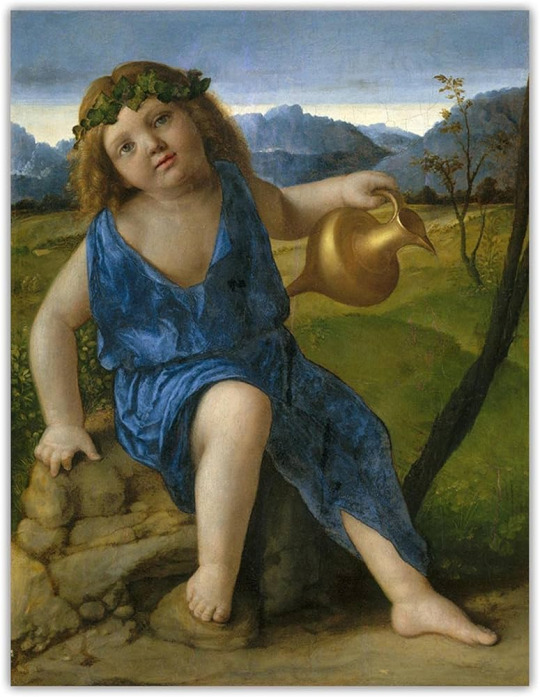
Giovanni Bellini's Child Bacchus
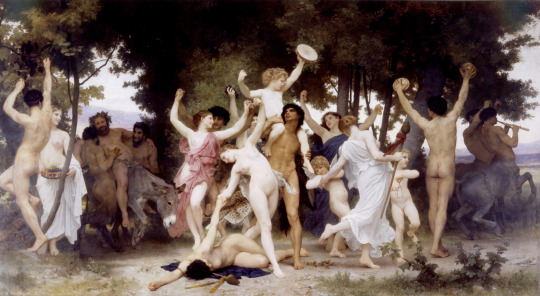
William-Adolphe Bouguereau's The Youth of Bacchus

Caravagio's Bacchus

Caesar van Everdingen's Nymphs offering wine, fruits and flowers to the young Bacchus
II) Bacchus as a god

Titien's Bacchus and Ariadne

Guido Reni's Bacchus and Ariadne

Brothers Le Nain's Bacchus discovering Ariadne at Naxos
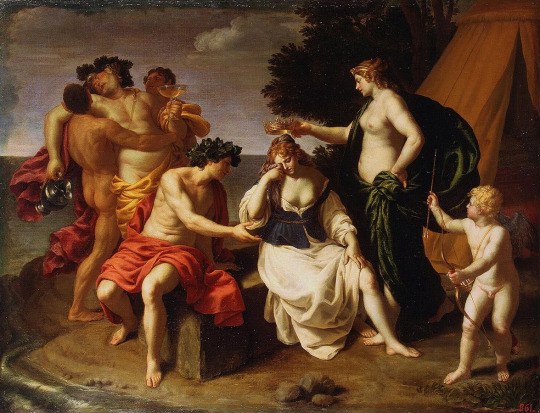
Alessandro Turchi's Bacchus and Ariadne

Caesar van Everdingen's Bacchus with two nymphs and Cupid

Charles de la Fosse's Bacchus and Ariadne

Jean-François de Troy's Bacchus and Ariadne

Sebastiano Ricci's Bacchus and Ariadne
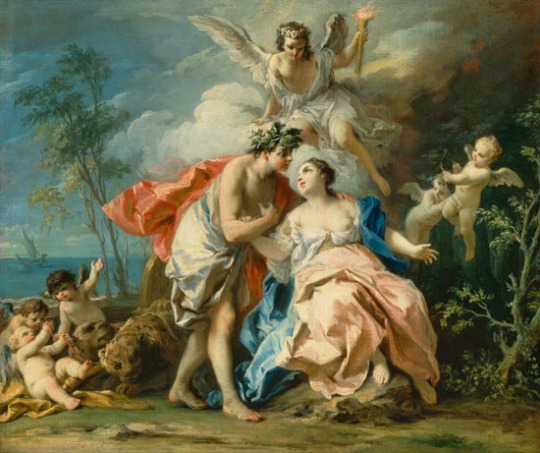
Jacopo Amigoni's Bacchus and Ariadne

Bartolomeo Manfredi's Bacchus and a drinker
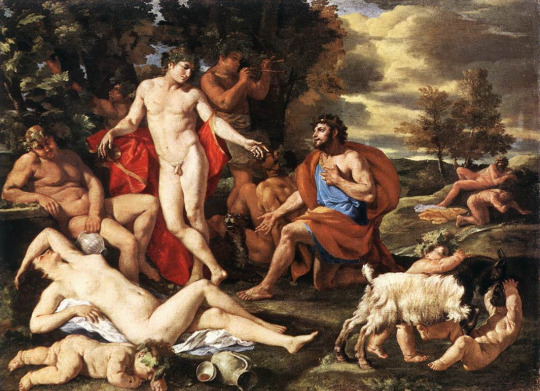
Nicolas Poussin's Midas and Bacchus
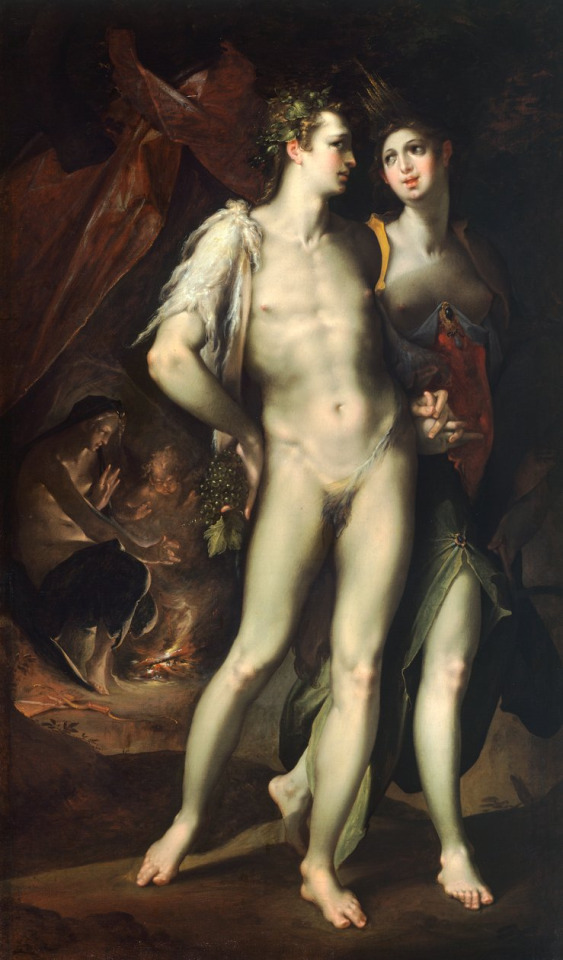
Bartholomaus Spranger's "Sine cerere et baccho friget venus", also known as Bacchus and Ceres

Louis de Caullery's Venus, Bacchus and Ceres dancing with mortals in a garden of love

Hans von Aachen's Bacchus, Ceres and Cupid

Bon Boullogne's Venus, Bacchus and Ceres

Sebastiano Ricci's Bacchus and Ceres

Maurice Dennis' Bacchus and Ariadne
#the art of the myth#dionysos#dionysus#greek god#greek mythology#ariadne#demeter#paintings#painting#art#museum#ceres#bacchus
75 notes
·
View notes
Text
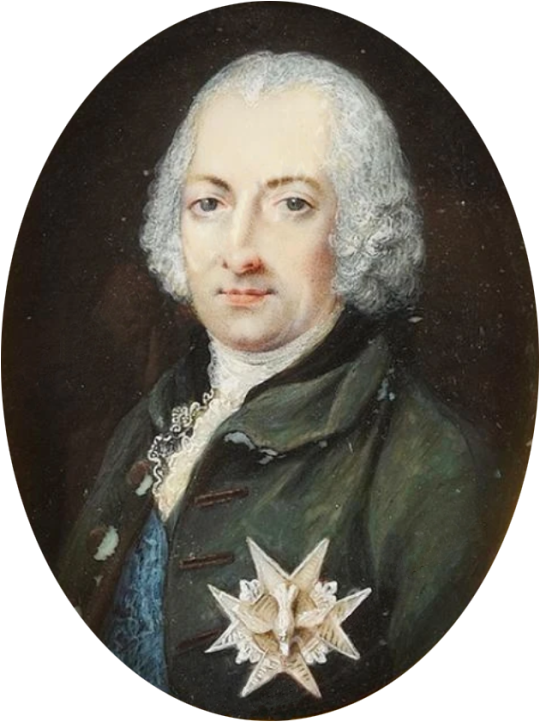
Louis-François I of Bourbon, Prince of Conti. Attributed to Jean-Baptiste Joseph le Tellier.
#Jean-Baptiste Joseph le Tellier#royaume de france#maison de bourbon#bourbon conti#Louis François I of Bourbon#prince de conti
3 notes
·
View notes
Text
Expansion of the royal domain
The way in which the kingdom was ruled in its different provinces had always varied according to the degree that power had been permanently or temporarily devolved to apanage princes and great nobles or that representative assemblies continued to function. It is therefore axiomatic that there was no 'system of government' in the France of the Renaissance. The question is: was there a tendency for the kingdom to become more centralised? R. Bonney has wisely cautioned against the over-use in French history of the term 'centralisation', a term coined in 1794. The main distinction drawn in the early modern period, as Mousnier made clear, was that between the king's 'delegated' and 'retained' justice, the latter covering all the public affairs of the kingdom in which the crown was supreme and the former the private affairs of his subjects. No one would pretend, however, that a clear line of division was ever established between the two.
If we consider the case of the apanages and' great fiefs, for instance, the century from the reign of Louis XI is usually considered definitive in their suppression. In 1480, there were around 80 great fiefs. By 1530 around half of these still existed. The rest were in abeyance or held by members of the royal family. Within the royal house, the apanage of Orleans was reunited to the crown on the accession of Louis XII, although thereafter used periodically for the endowment of the king's younger son, permanently so after the reign of Louis XIV. The complex of territories held by the Bourbon and Bourbon-Montpensier families fell by the treason of the Constable in 1523. Burgundy (and temporarily Artois and Franche-Comté) were taken over in 1477. Among the great fiefs, the county of Comminges was united to the crown on the death of count Mathieu de Foix in 1453, the domains of the Armagnacs (such as the county of Rodez) were confiscated on the destruction of Jean V at Lectoure in 1473. They found their way by the reign of Francis I into the hands of the royal family, through the marriage of Jean V's sister to the count of Alençon. The last Alençon duke, Charles, married Francis I's sister, Marguerite of Angoulême, and Alençon's sister, Françoise, married duke Charles of Vendôme, grandfather of Henry IV. Brittany was acquired through war and marriage alliance in the 1490s, Provence and the domains of the house of Anjou after the death of king René and then of Charles d'Anjou in 1481. The archives of the Chambre des comptes of Anjou for the early 1480s give ample evidence of the king's determination to exploit his new acquisition as soon as possible.
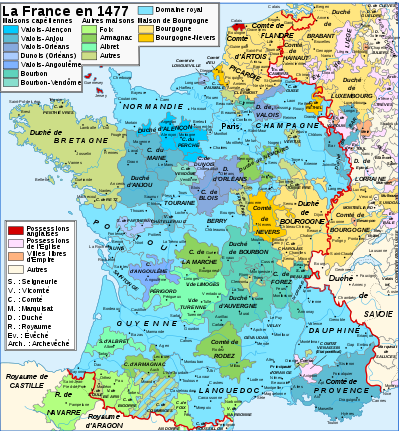
It should not be assumed that the crown pursued a consistent determination to lay hands on all these territories and rule them directly. There was usually a more or less lengthy period of adjustment to a new status. Some apanages and territories taken over by Louis XI were absorbed into the general administration of the rest of the kingdom. This was clearly the case with Burgundy and Picardy-Artois in 1477, both of them in the area under the jurisdiction of the Parlement of Paris. Yet even here, Louis XI had to tread warily in winning over the support of the regional nobility and discontent was apt to break out until the end of the fifteenth century. On Louis's death, for instance, a rising occurred in Picardy at Bertrancourt near Doullens, with cries of 'there is no longer a king in France, long live Burgundy!' The absorption of Artois proved to be an impossible undertaking and had to be renounced in 1493.
Elsewhere, absorption of apanages that were distant from the centre of royal power left affairs locally much as they had been before. The little Pyreneen county of Comminges was governed much as it had been under its counts, with privileges confirmed by Charles VIII in 1496. Only with the work of royal commissioners in the tax-assessing process in the 1540s, the first time an outside power had actively intervened in the affairs of the local nobility, did this begin to change. Auvergne, an apanage raised to a duchy in 1360, was confirmed to the Bourbons in 1425 on condition that their whole domain became an apanage. The duchy was confiscated from the Constable in 1523 but transferred by the king to his mother in 1527 and only absorbed into the royal domain in 1531. Even after that, it formed the dower of Charles IX's queen and then part of the apanage of François d'Anjou, his brother. In the contiguous county of Forez, also confiscated in 1523, little local opposition emerged to the change of regime; although the local chambre des comptes was shortly suppressed, most local judicial officials, along with the entire administrative structure, were retained. Except for a few partisans of the Constable, it seems that there was no great upheaval. Louise de Bourbon, the Constable's sister and princess of La Roche-sur-Yon, demanded a share of the inheritance - Forez, Beaujolais and Dombes. Beaujolais and the principality of Dombes eventually went to Louise's son, Montpensier.
The county of Auvergne, enclaved in the duchy, was held by the duke of Albany in his wife's name, and was then inherited from the last of the La Tour d'Auvergne family by Catherine de Medici. Catherine brought it to the crown by her marriage with Henri II in 1533 but she continued to administer it as her own property. She left it to Charles IX's bastard, Charles de Valois, but her daughter Marguerite made good her claim to it in 1606 and it only entered the royal domain definitively when she willed it to Louis XIII.
After her marriage to Charles VIII in 1491, Brittany was administered as her own property by queen Anne, technically still duchess but in reality sharply circumscribed in her power, until her husband's death restored some of her freedom of action in 1498. Having already established friendly relations with Louis XII when he was still duke of Orleans, she was prepared to accept his offer of marriage after the annulment of his marriage to Louis Xl's daughter, Jeanne, had been agreed. The contract which accompanied the marriage in January 1499 tied the duchy to the crown provisionally on condition that it always passed to the second son of the marriage, while in the absence of issue the duchy was to revert to Anne's heirs on her own side. Anne was able to act rather more independently during her marriage to Louis XII though the conditions of the contract were not observed. On her death Brittany was inherited by her elder daughter Claude, wife of Francis I, who transmitted her rights to her son the dauphin. The queen had, however, transferred the government of the duchy to her husband in 1515 and he continued to rule it in the name of his son François on Claude's death, entitling acts as 'legitime administrateur et usufructuaire' of his son's property. When the dauphin's majority in 1532 brought the question of the imminent personal union of the duchy to the kingdom to the foreground, it was arranged for the Breton estates to 'request' full union with France but on terms which guaranteed Breton privileges and maintained the principle that the dauphin would be duke of Brittany. Only in 1536, on the death of the dauphin, was the union with the kingdom complete and no more dukes were crowned at Rennes. What had been done was the annulment of the Breton succession law, which included females, in favour of the French royal succession law. Late in 1539, it was decided that the new dauphin Henri would have the government of Brittany 'to govern as he pleases', though the documents were delayed by the king's illness. A 'Declaration' transferring Brittany to Henri was drawn up in 1540. In practice, the government of the duchy seems not to have been much changed.
The lands of the house of France-Anjou posed a complex problem. René of Anjou, titular king of Jerusalem, Sicily, Aragon and Naples, was count of Provence in his own right, of Maine and Anjou as apanagiste and Guise by succession. As early as 1478, Louis was scheming to ensure that king René, who had no surviving son, did not leave his territories of Anjou, Provence and Bar to his grandson, René II of Lorraine, warning the general of Languedoc that his region would be 'destroyed' if Provence fell into other hands. On the 'good' king's death in 1480, most of his domains passed to his cousin Charles IV d'Anjou, count of Maine, who died childless in 1481, when Maine and Anjou reverted to the crown, thereafter to be granted out to members of the royal family such as Louise of Savoy. At the same time Provence was acquired by Louis XI by Charles IV's will and the county of Guise was disputed between the houses of Armagnac-Nemours, Lorraine (heirs of René I of Anjou and successors as titular kings of Jerusalem and Sicily) and Pierre de Rohan, marshal de Gié. From 1481, however, the king ruled in Provence as 'count of Provence and Forcalquier'. The lord of Soliès, Palamède de Forbin, who had persuaded Charles d'Anjou to leave the county to the king, was rewarded with the post of governor. The major change came in 1535 with the edicts of Joinville and Is-sur-Tille on the government of Provence, limiting the scope of the old institutions of the Estates and the Sénéchal and increasing that of the Parlement of Aix in justice and of the royal governor in administration. Curiously, Francis I was reported as having said that he felt an obligation to 'ceux de Guise', the house of Lorraine in France, since Louis XI had despoiled them of their inheritance of Provence and Anjou.
The major surviving complex of apanage lands by the middle of the sixteenth century was that held by Antoine de Bourbon, now first prince of the blood and next in line to the throne after the immediate royal family, and his wife Jeanne d'Albret. These involved a group of territories held by different tenures. The Albret inheritance brought the titular kingship of Navarre with a small fragment of the ancient kingdom of Navarre north of the Pyrénées that was held in sovereignty. In the counties of Foix, Albret and Béarn, the family held effective sway under only the most distant royal sovereignty, though Louis XI saw fit to pose as the protector of the young François-Phébus in 1472. In 1476, he sought to revise local tariffs against Albret interests and in 1480 attempts to levy a taille for the gendarmerie there stirred up a rebellion. In western France, the duchy of Vendôme, erected as late as 1515 to detach it from dependence on the duchy of Anjou, was held as an apanage under rather closer royal supervision. In the north, the complex of lands administered from La Fère-sur-Oise and centring the county of Marle was held directly of the king or of the Habsburg ruler of the Netherlands, rendering the family, to some, unreliable. Practical power stemmed from the holding of the governorships of Picardy and of Guyenne by the Bourbons and Henri d'Albret.
Other independent territories persisted, such as the vicomté of Turenne, where the vicomte (of the La Tour d'Auvergne family) ruled with regalian rights until the eighteenth century, could raise taxes, coin money, make war and render justice as a limited monarch in conjunction with very active local estates.
David Potter - A History of France, 1460-1560- The Emergence of a Nation State
#xv#xvi#david potter#a history of france 1460 1560: the emergence of a nation state#louis xi#louis xii#charles iii de bourbon#mathieu de foix#jean v d'armagnac#françois i#charles iv d'alençon#marguerite d'angoulême#rené d'anjou#charles viii#charles ix#élisabeth d'autriche#louise de bourbon#gilbert de montpensier#catherine de medici#house of la tour d'auvergne#charles de valois#louis xiii#anne de bretagne#jeanne de france#claude de france#charles iv d'anjou#louise de savoie#house of guise#capetian house of bourbon#antoine de bourbon
4 notes
·
View notes